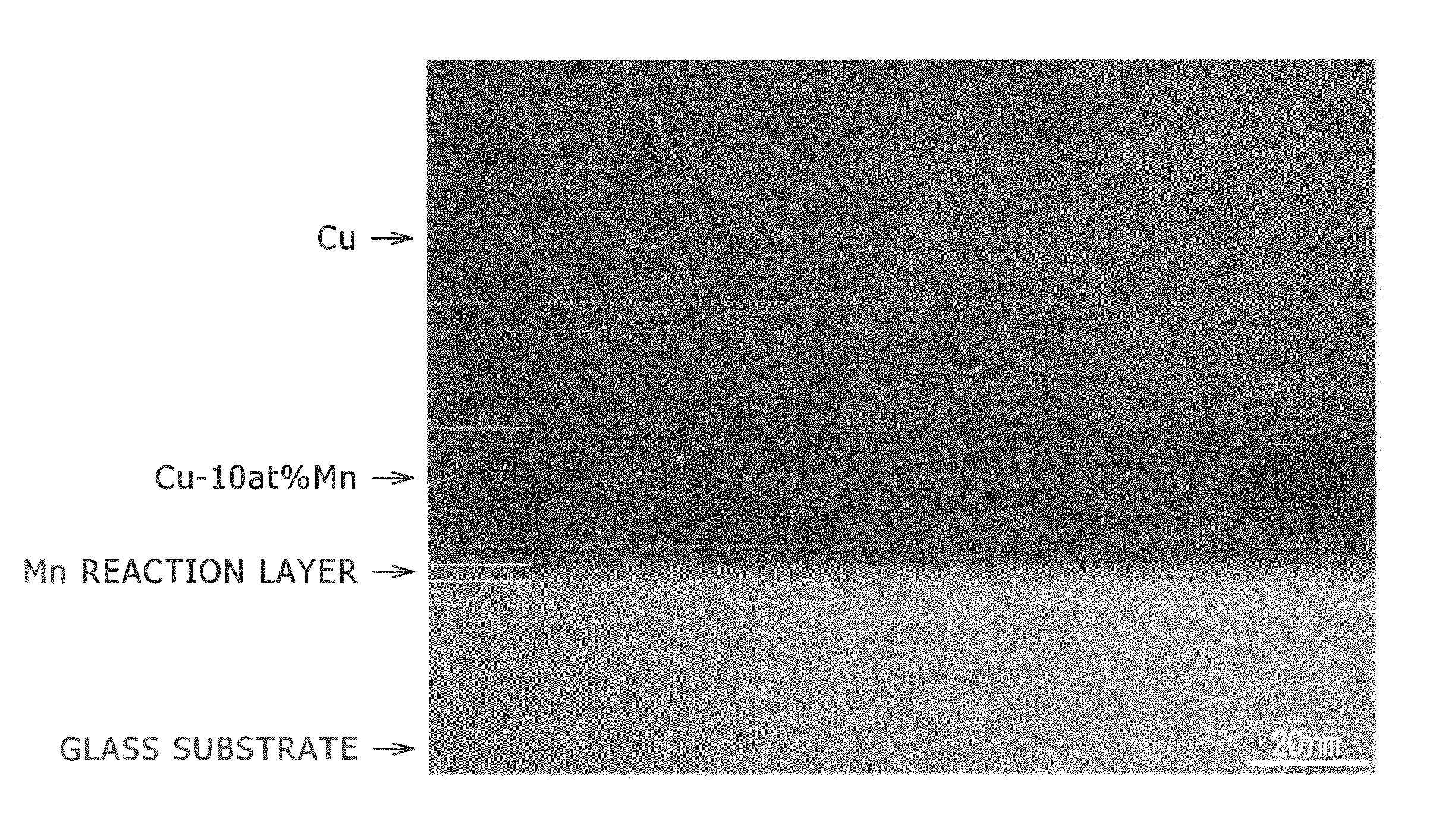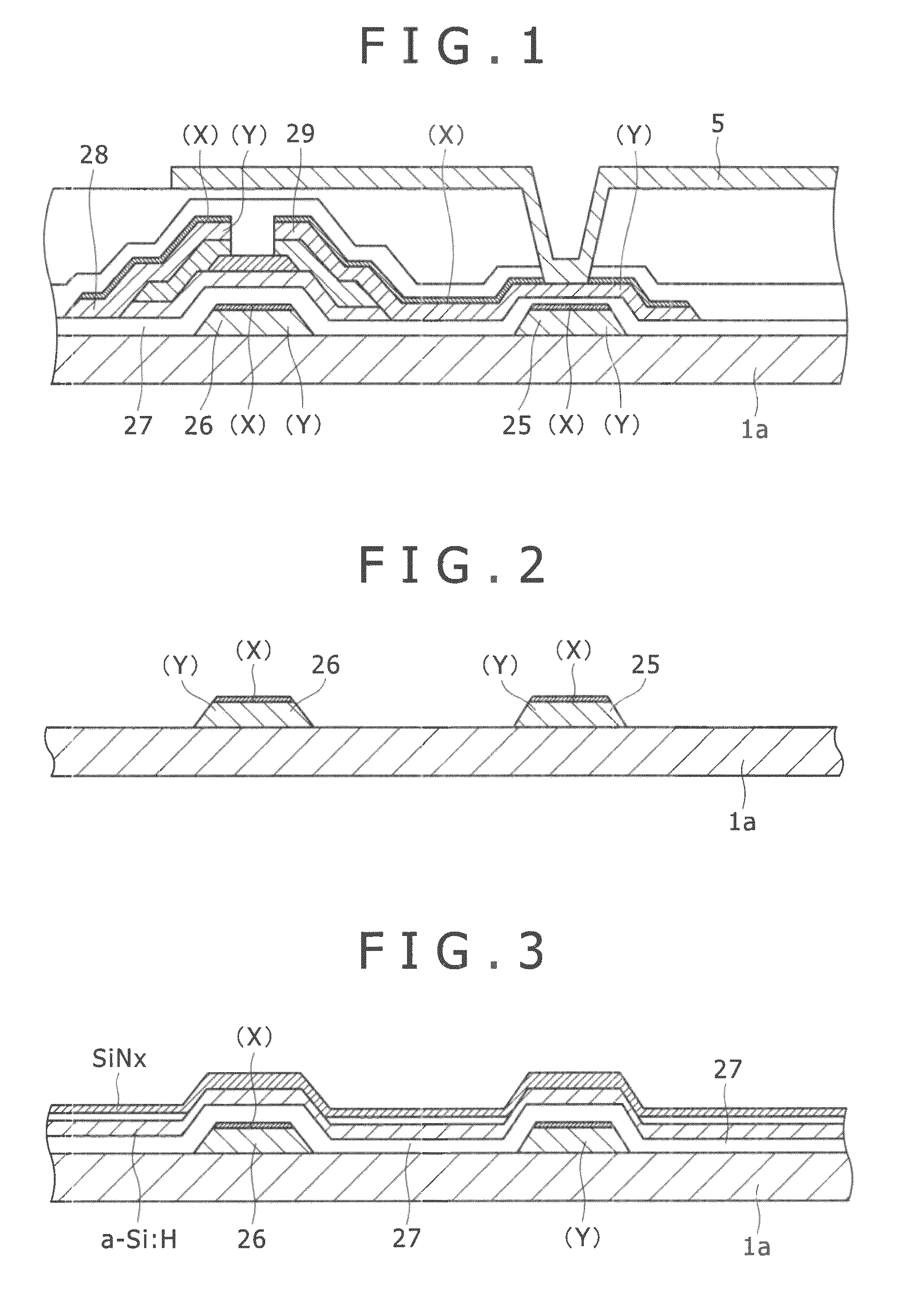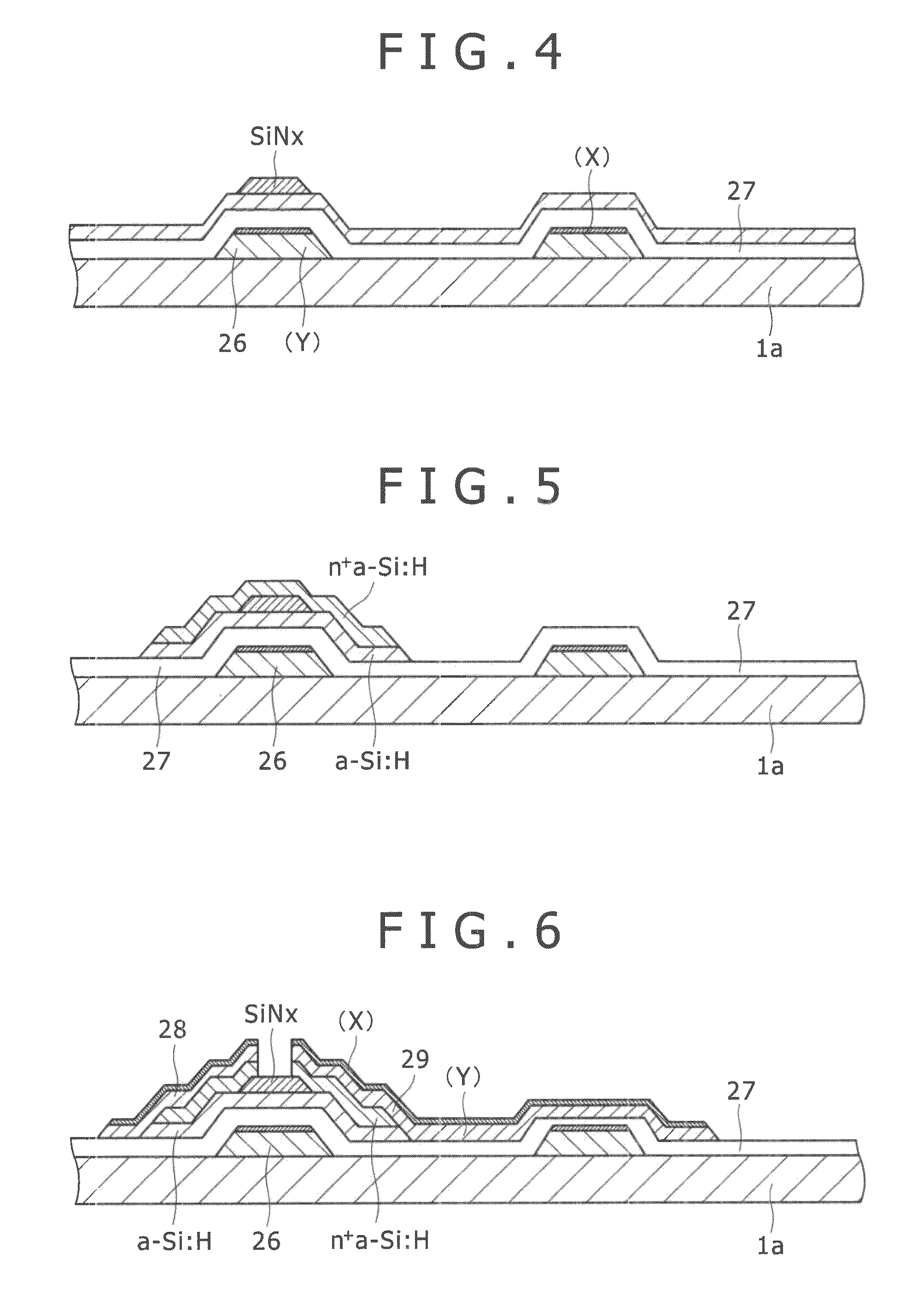Display device
a technology of a display device and a display screen, which is applied in the direction of discharge tube luminescnet screens, instruments, and semiconductor/solid-state device details, etc., can solve the problems of signal delay and electrical power loss, low adhesiveness of glass substrates, and large wiring resistance, and achieve excellent adhesiveness and low electrical resistivity. , the effect of high adhesiveness
- Summary
- Abstract
- Description
- Claims
- Application Information
AI Technical Summary
Benefits of technology
Problems solved by technology
Method used
Image
Examples
example 1
Production of Samples
[0095]In the present example, with respect to the samples (Nos. 3 to 35) shown in Table 1 produced in the following way, influences on the electrical resistivity and the adhesiveness to the glass substrate by the type and content of the Cu alloy of which the first layer (Y) was composed and by the thickness of the first layer (Y) were investigated.
[0096]Cu alloy films each having the multilayer structure, which includes the first layer (Y) composed of a Cu alloy containing various elements shown in Table 1 and the second layer (X) composed of pure Cu, were produced as described below by a sputtering method. In Table 1, each of Nos. 3 to 16 represents an example in which Mn was added as the element of which the first layer (Y) was composed, No. 17 represents an example in which Bi was added, each of Nos. 18 to 21 represents an example in which Ni was added, each of Nos. 21 to 23 represents an example in which Zn was added, each of Nos. 24 and 25 represents an exa...
example 2
[0125]In the present example, the adhesiveness of each of the samples (present invention examples and comparative examples), which had used soda-lime glass and been produced in the following way, was investigated after the DC stress test and the peeling test. The DC stress test is a test method for checking a change in the leak current between electrodes and a change in the appearance, such as occurrence of peel off and formation of a foreign substance, while patterns electrically spaced apart from each other with a constant distance between them, are being maintained in a state of constant electric field strength being held between the patterns when a stress, which is a constant drive voltage (direct current), is applied between them. The DC stress test is useful as a test method in which an abnormality in the wiring, occurring due to the transfer of an electrical charge by a normal panel operation, can be checked in a short period of time by applying, in constant temperature and h...
example 3
[0135]In the present example, Mn was used as the element of which the first layer (Y) was composed, and influences on the adhesiveness to the glass substrate and the electrical resistivity by the content of Mn and the thickness of the first layer (Y) were investigated further in detail.
(1) Evaluation of Adhesiveness to Glass Substrate
[0136]The multilayer film including the first layer (Y) and the second layer (X) was formed on a glass substrate in the same way as Example 1, except that EAGLE 2000 (size: 4 inches in diameter×0.7 mm in thickness) made by Corning Incorporated was used as the glass substrate, the thickness of the first layer (Y) was changed between 5 and 100 nm, and that of the second layer (X) was made constant at 500 nm. After the multilayer film was formed, a heat treatment was further performed at 320° C. for 5 minutes under 1 Pa of nitrogen atmosphere by using a CVD apparatus. Subsequently, cuts were made in a grid pattern of 5×5 cells at intervals of 1 mm on the s...
PUM
| Property | Measurement | Unit |
|---|---|---|
| thickness | aaaaa | aaaaa |
| thickness | aaaaa | aaaaa |
| taper angle | aaaaa | aaaaa |
Abstract
Description
Claims
Application Information
 Login to View More
Login to View More - R&D
- Intellectual Property
- Life Sciences
- Materials
- Tech Scout
- Unparalleled Data Quality
- Higher Quality Content
- 60% Fewer Hallucinations
Browse by: Latest US Patents, China's latest patents, Technical Efficacy Thesaurus, Application Domain, Technology Topic, Popular Technical Reports.
© 2025 PatSnap. All rights reserved.Legal|Privacy policy|Modern Slavery Act Transparency Statement|Sitemap|About US| Contact US: help@patsnap.com



